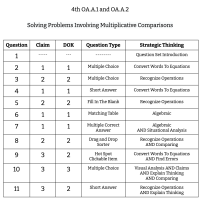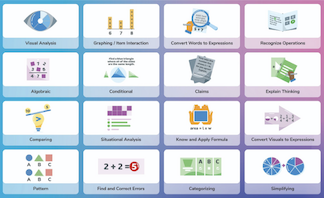
4th Grade Math - OA.A.1 and OA.A.2 - Solving Problems Involving Multiplicative Comparisons
11 Questions
Solving Problems Involving Multiplicative Comparisons Introduction
What statement represents the equation 4 x 8 = 32?
Kofi weighs 8 times as much as his new baby brother, Xavier. Xavier weighs 9 pounds.
The number 48 is 8 times as many as 6.
Asuka has 3 times as many fish as Sasha. Sasha has 7 fish. Enter the number of fish Asuka has.
Match each statement to its missing number.
Which of the following statements could be correctly finished by including the number 9?
Solve each problem and then put them in order from least to greatest.
Four students were asked to write an equation for different problems. One of them made an error. Click on the student who made the error.
Bayley claims that unsweetened apple juice has less than twice the calories of vegetable juice.
Dominic pulls down a 36 oz pitcher from the cabinet. He also pulls down a glass that is 4 times smaller than the pitcher.

We help districts in California boost CAASPP Math Scores by Δ +20% by helping teachers determine if students are struggling with the content, the technology involved with the type of question, or the type of strategic thinking required. Based on the 8 Standards for Mathematical Practice, our platform and professional development empowers teachers to recognize all 16 types of strategic thinking across any math question, curriculum, or assessment.
Learn more